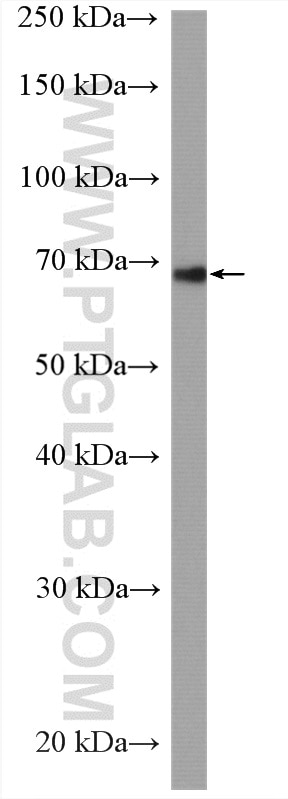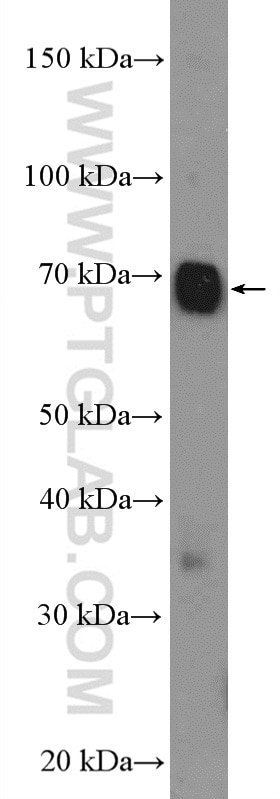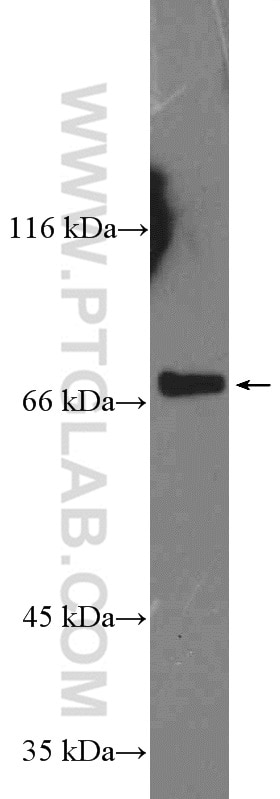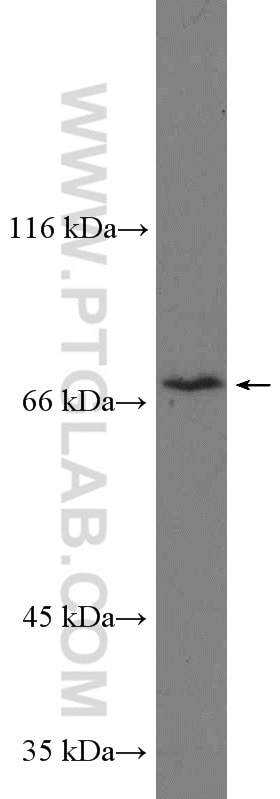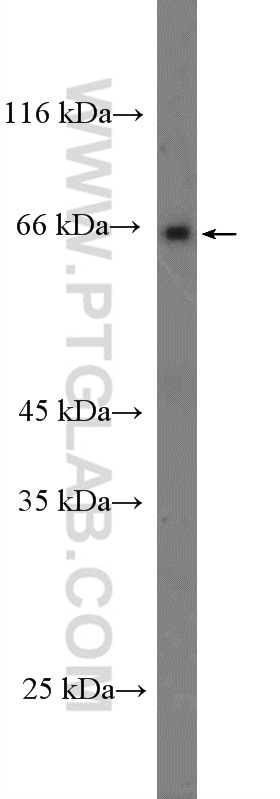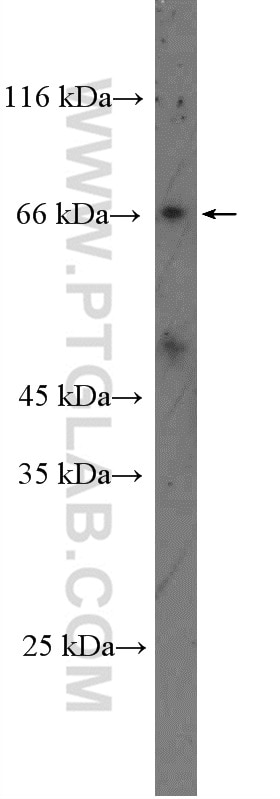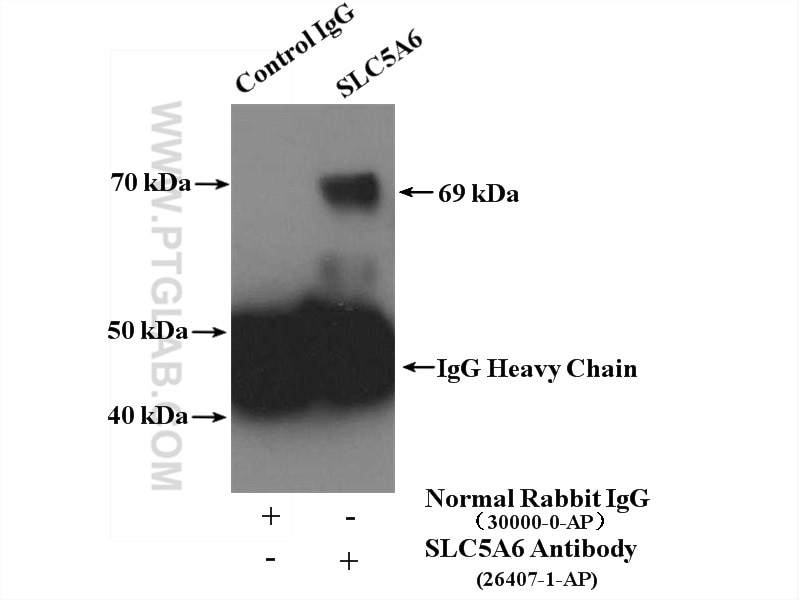SLC5A6 Polyclonal antibody
SLC5A6 Polyclonal Antibody for WB, IP, ELISA
Host / Isotype
Rabbit / IgG
Reactivity
human, mouse, rat
Applications
WB, IP, ELISA
Conjugate
Unconjugated
Cat no : 26407-1-AP
Synonyms
Validation Data Gallery
Tested Applications
| Positive WB detected in | Caco-2 cells, mouse brain tissue, mouse small intestine tissue, COLO 320 cells, rat brain tissue |
| Positive IP detected in | mouse brain tissue |
Recommended dilution
| Application | Dilution |
|---|---|
| Western Blot (WB) | WB : 1:500-1:1000 |
| Immunoprecipitation (IP) | IP : 0.5-4.0 ug for 1.0-3.0 mg of total protein lysate |
| It is recommended that this reagent should be titrated in each testing system to obtain optimal results. | |
| Sample-dependent, Check data in validation data gallery. | |
Published Applications
| WB | See 2 publications below |
Product Information
The immunogen of 26407-1-AP is SLC5A6 Fusion Protein expressed in E. coli.
| Tested Reactivity | human, mouse, rat |
| Cited Reactivity | human, mouse |
| Host / Isotype | Rabbit / IgG |
| Class | Polyclonal |
| Type | Antibody |
| Immunogen | SLC5A6 fusion protein Ag23907 |
| Full Name | solute carrier family 5 (sodium-dependent vitamin transporter), member 6 |
| Observed Molecular Weight | 69 kDa |
| GenBank Accession Number | BC012806 |
| Gene Symbol | SLC5A6 |
| Gene ID (NCBI) | 8884 |
| RRID | AB_2880502 |
| Conjugate | Unconjugated |
| Form | Liquid |
| Purification Method | Antigen affinity purification |
| Storage Buffer | PBS with 0.02% sodium azide and 50% glycerol pH 7.3. |
| Storage Conditions | Store at -20°C. Stable for one year after shipment. Aliquoting is unnecessary for -20oC storage. 20ul sizes contain 0.1% BSA. |
Protocols
| Product Specific Protocols | |
|---|---|
| WB protocol for SLC5A6 antibody 26407-1-AP | Download protocol |
| IP protocol for SLC5A6 antibody 26407-1-AP | Download protocol |
| Standard Protocols | |
|---|---|
| Click here to view our Standard Protocols |
Publications
| Species | Application | Title |
|---|---|---|
Nat Metab Vitamin B5 supports MYC oncogenic metabolism and tumor progression in breast cancer | ||
Mol Cell Proteomics Hypoxia is a dominant remodeler of the effector T cell surface proteome relative to activation and regulatory T cell suppression. |
